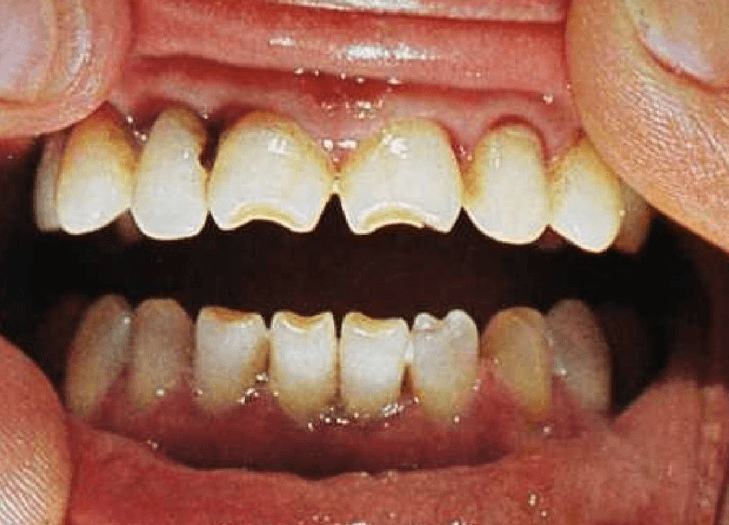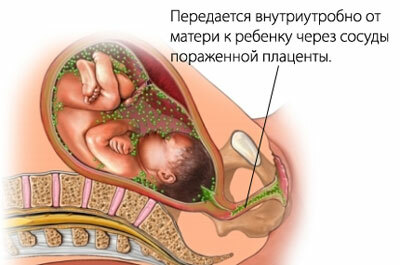Neurosyphilis: symptoms, forms, diagnosis and treatment
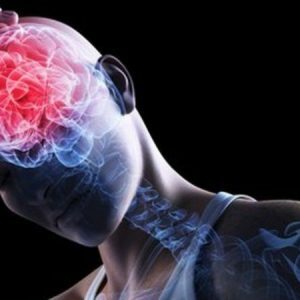 Neurosyphilis is a venereal disease that disrupts the work of some internal organs, and, in the absence of treatment, spreads to the nervous system in a short time.It can occur at any stage of syphilis.The development of the disease is accompanied by attacks of severe dizziness, weakness in muscles, convulsions.Dementia and paralysis of the limbs are often observed.
Neurosyphilis is a venereal disease that disrupts the work of some internal organs, and, in the absence of treatment, spreads to the nervous system in a short time.It can occur at any stage of syphilis.The development of the disease is accompanied by attacks of severe dizziness, weakness in muscles, convulsions.Dementia and paralysis of the limbs are often observed.
Infection occurs sexually, after which the infection spreads through the body with a flow of blood.With the development of the pathological process, the number of antibodies is reduced, after which the virus affects the nervous system.
Table of contents: Etiology of the disease Forms of neurosyphilis Symptoms of neurosyphilis Diagnosis of the disease Treatment of neurosyphilisThe disease can be both acquired and congenital.
Etiology of the disease
The main factor in the onset of the disease is the bacterium pale treponema.This means that infection occurs from an infected person.
Main ways of spreading the infection:
- the main mode of transmission is sexual intercourse. The virus enters the body through small lesions of the skin and mucous membranes.Contraceptive reduces the risk of infection, but does not exclude it completely;
- blood transfusion;
- intrauterine infection - transmission of the disease from mother to fetus;
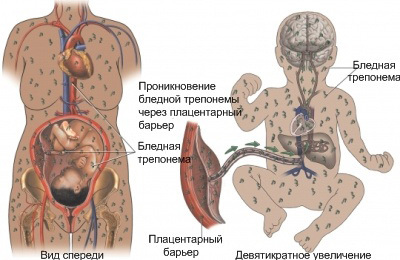
- surgical interventions, including dental;
- The household transmission path is only possible with the use of personal hygiene products and cutlery.
Factors predisposing to disease progression:
- untimely treatment of syphilis;
- mental overstrain;
- frequent stresses or a strong emotional outburst;
- brain injury;
- weakened immunity;
- in the risk zone are medical workers, constantly in contact with different biological emissions of a person: blood, saliva or semen.Infection can occur during surgery or labor.
The most contagious are patients who tolerate the disease in the early stages.People whose illnesses last five or more years are less likely to be affected.
Forms of neurosyphilis
In medicine, neurosyphilis is divided according to the prescription of infection. So distinguished:
-
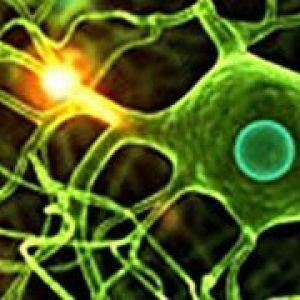 early neurosyphilis develops during the first five years after infection with the underlying disease.Damaged blood vessels and nerve fibers;
early neurosyphilis develops during the first five years after infection with the underlying disease.Damaged blood vessels and nerve fibers; - late nerosifilis - from infection to the development of the disease takes more than five years.Pathological processes extend to nerve cells;
- congenital nerosifilis - symptoms appear during the first year of life of the newborn.
The disease is characterized depending on the severity of the symptoms and distinguishes several forms:
- latent - often diagnosed accidentally during a routine examination.Symptoms of the disease are not observed, and the virus is detected by the investigation of the cerebrospinal fluid;
- syphilitic meningitis - mainly observed in young people.The main symptoms: nausea, weakness, decreased visual acuity;
- dorsal dry - affection of the cord and spine cord;
- meningovascular neurosyphilis - the circulation in the brain is disturbed.There is a deterioration in memory, and there are problems with sleep;
- gummy neurosyphilis - characterized by progressive paralysis.This form occurs with late neurosyphilis.
If the diagnosis is not made in time and the treatment is not started, the disease can lead to disability, complete paralysis and death.
Neurosyphilis Symptoms
There are specific signs for each form of the disease.
Symptoms of early neurosyphilis:
- attacks of nausea and vomiting;
- decreased sensitivity of the pelvic organs;
- severe headache and dizziness;
- epileptic seizures;
- decreased visual acuity and hearing;
- on the background of nocturnal cramps, sleep disturbances occur;
- memory impairment and concentration;
- muscle weakness.
Symptoms of late neurosyphilis:
- complete loss of vision at the beginning of one eye, and then, as the progression of blindness acquires a two-sided character;
- hallucinations;
- increased irritability;
- inadequate behavior;
- change of gait and handwriting;
- tongue tremor;
- increase in body temperature.
Gradually the disease leads to paralysis, seizures and abnormalities of the pelvic organs.
Symptoms of congenital neurosyphilis:
- inflammation of the cornea of both eyes;
- deformation of the dentition( "Getschinson's teeth");Insufficient or total loss of hearing.
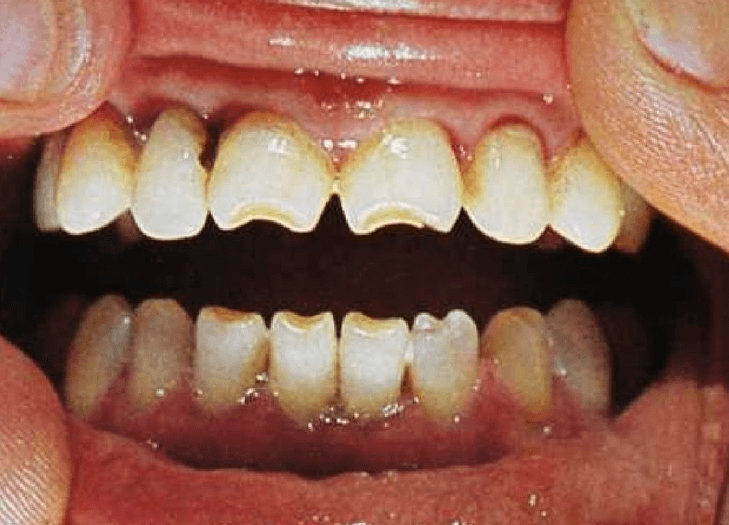
- .
With the timely diagnosis and proper therapy of a congenital form, the progression of the infection can be stopped, but the consequences of a nervous system disorder will last a lifetime.
Diagnosis of the disease
Neurosyphilis is diagnosed on the basis of a clinical picture, a laboratory study of the CSF and a positive test result.Also is important neurological examination, laboratory blood tests( RIBT and RIF) and examination of the patient with an ophthalmologist. In some cases, blood tests are performed repeatedly.
In the latent stage of neurosyphilis, the cerebrospinal fluid is examined.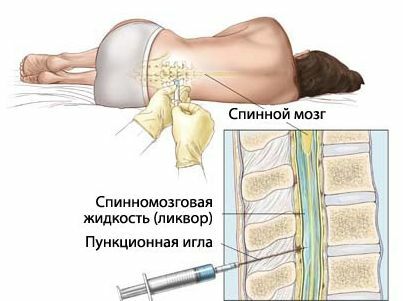
CT or MRI examinations of the spinal cord or brain can detect pathological changes in the envelopes of these organs, as well as the location of the infection. An important part of the diagnosis is the differentiation of neurosyphilis from other diseases with similar symptoms. These include: malignant tumors of the brain and spinal cord, vasculitis, sarcoidosis, meningitis of different nature.
Treatment of neurosyphilis
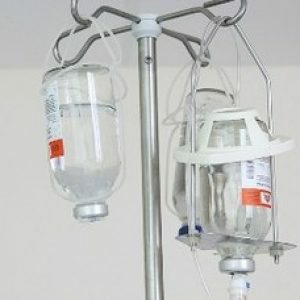 Therapy of the disease is carried out only in a hospital.Special preparations with a high content of penicillin are administered to the patient's body.
Therapy of the disease is carried out only in a hospital.Special preparations with a high content of penicillin are administered to the patient's body.
The duration of the course of treatment is at least two weeks.For greater digestibility, the administration of a probenicide, a substance that inhibits the excretion of penicillin by the kidneys, is additionally prescribed.Patients who are allergic to this drug are given ceftriaxone.The first day of therapy with this medicine increases body temperature, the heart rate increases and unbearable headaches occur.
In addition to penicillin, corticosteroids and anti-inflammatory agents are prescribed.
The degree of expression of the symptoms of the disease and the improvement of the state of the CSF are the criteria by which the effectiveness of therapy is evaluated.At the end of treatment, the patient's condition is monitored for two years.For this, the cerebrospinal fluid is examined every six months.When new symptoms occur, or old ones become worse, a second course of drug therapy is prescribed.
At an early stage, the disease can be almost completely eliminated. With severe damage to the nerves and blood vessels, some signs may remain with the patient for life.The congenital form entails lifelong deafness, and sometimes - disability.
To exclude the possibility of infection, it is enough to carefully follow the procedures of personal hygiene, to exclude unprotected sex, and also to not use common things and devices with an infected person.
Radevich Igor Tadeushevich, the doctor of the sexopathologist-andrologist of 1 category

